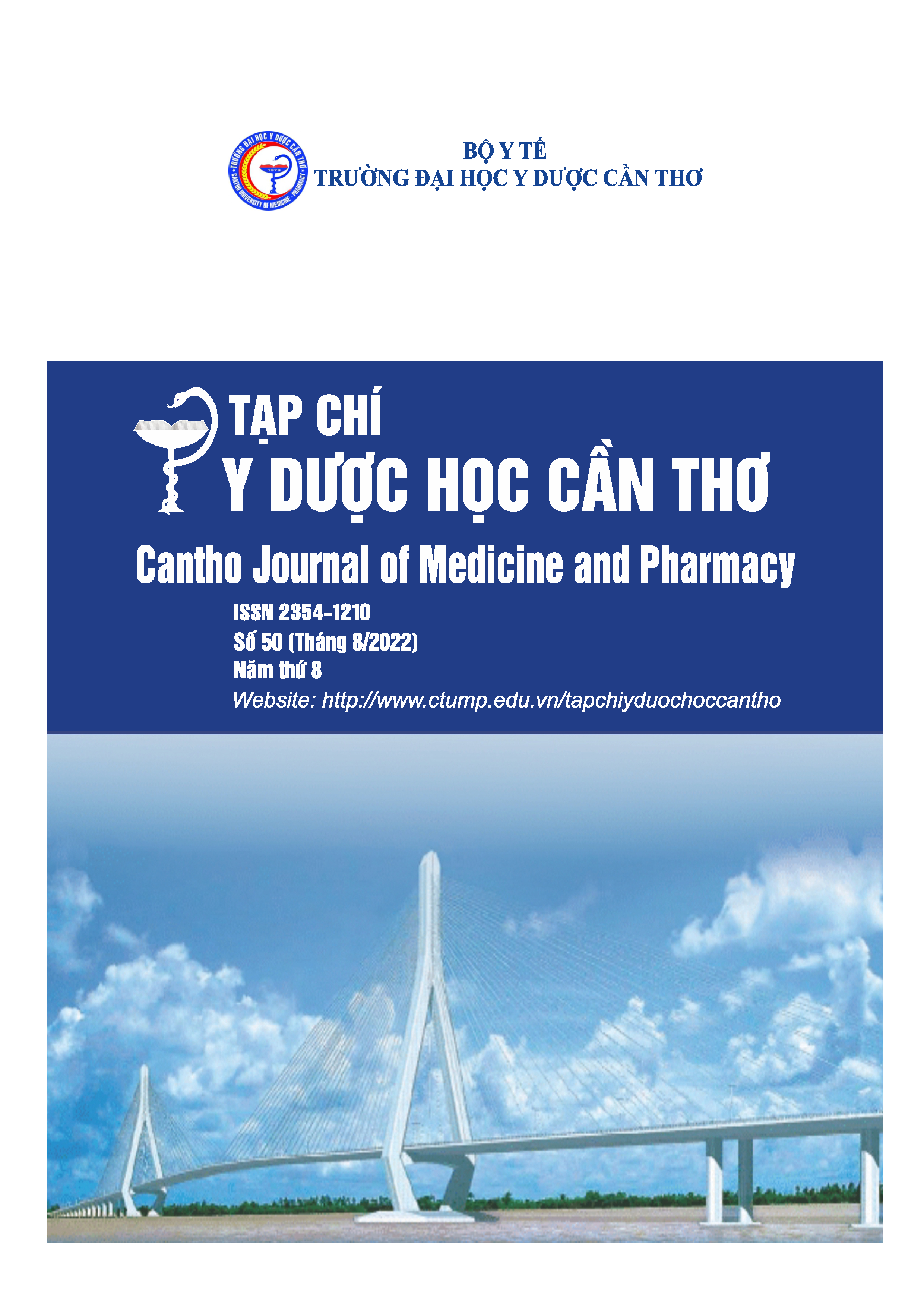THE CLINICAL, LABORATORY CHARACTERISTICS AND RESULTS OF TREATMENT FOR MULTIPLE RENAL PELVIC STONES BY RETROPERITONEAL LAPAROSCOPIC PYELOLITHOTOMY IN CAN THO
Main Article Content
Abstract
Background: Urinary tract stones are a common disease of the urinary tract. Retroperitoneal laparoscopic pyelolithotomy surgery has shown many advantages, reducing the complications. Currently, in Can Tho city, there are not many studies that evaluating the results of treatment, especially for multiple renal pelvic stones. Objectives: To describe clinical, laboratory characteristics and evaluate the treatment outcome of retroperitoneal laparoscopic pyelolithotomyfor multiple renal pelvic stones in 2021-2022. Material and methods: A prospective cross-sectional study was conducted on 35 patients were treated multiple renal pelvic stones by retroperitoneal laparoscopic pyelolithotomy method in Can Tho city, from 3/2021 to 7/2022. Results: 35 patients were included in the study, which had 15 males (42.9%) and 20 females (57.1%). The mean age of patients was 53.8±11.7 years. Back pain was the most common symptom (94.3%). Stone positions: 60% right, the 40% left kidney. The mean operative time was 112.7±28.4 minutes. Good treatment result was 71.4%, medium results was 22.9% and bad results was 5.7%. Conclusion: Retroperitoneal laparoscopic pyelolithotomy surgery is a safe and effective treatment for multiple renal pelvic stone.
Article Details
Keywords
Multiple renal pelvic stones, retroperitoneal laparoscopic pyelolithotomy for renal pelvic stone
References
2. Đàm Văn Cương, Lê Thị Kim Hồng (2011), “Nghiên cứu mô hình bệnh niệu sinh dục tại bệnh viên Đa khoa Trung Ương Cần Thơ”, Y học Thực hành, 769-770, tr.49-54.
3. Nguyễn Trung Hiếu (2019), “Nghiên cứu đặc điểm lâm sàng, hình ảnh X-quang, siêu âm và đánh giá kết quả điều trị sỏi bể thận bằng phương pháp nội soi sau phúc mạc lấy sỏi tại Bệnh viện Đa khoa Trung ương Cần Thơ năm 2018-2019”, Luận văn Chuyên khoa cấp II, Trường Đại học Y Dược Cần Thơ.
4. Trần Văn Hinh (2013), Các phương pháp chẩn đoán và điều trị bệnh sỏi tiết niệu, Nhà xuất bản Y học, Hà Nội.
5. Nguyễn Thị Khánh Vân (2014), “Nghiên cứu đặc điểm lâm sàng, cận lâm sàng và đánh giá kết quả điều trị phẫu thuật nội soi sau phúc mạc trong điều trị sỏi thận tại Bệnh viện Đa khoa Trung ương Cần Thơ và Đa khoa thành phố Cần Thơ năm 2013-2014”, Luận văn tốt nghiệp Bác sĩ Đa khoa, Trường Đại học Y Dược Cần Thơ.
6. Adel Al-Hunayan, Hamdy Abdulhalim, Ehab El-Bakry, Majed Hassabo, Elijah O Kehinde (2009), “Laparoscopic pyelolithotomy: Is the retroperitoneal route a better approach?”, International Journal of urology, 16(2), pp.181-186.
7. Margaret S. Pearle (2012), “Urinary Lithiasis: Etiology, Epidemiology, and Pathogenesis”, Campbell-Walsh Urology 10th, pp.1257-1286.
8. Chao Qin et al. (2014), “Retroperitoneal Laparoscopic Technique in Treatment of Complex Renal Stones”, BMC Urol, 14(1), pp.16.
9. Rodrigo S. Soares, Pedro Romanelli, Marcos A. Sandoval, Marcelo M. Salim, Jose E. Tavora,David L. Abelha Jr (2005), “Retroperitoneoscopy for treatment of renal and ureteral stones”, Int. braz j urol, 31(2), pp.111-116.


